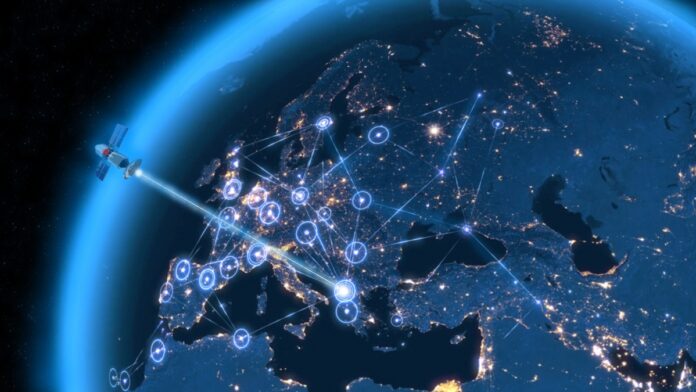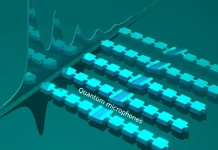A Worldwide Network of Information Transmission and Processing in the Military can be achieved and maintained by the global information grid. Information advantage is a critical element of national power that requires the concentrated effort of the Department of Defense (DoD) to provide a seamless information environment optimized for the whole of the force of a nation, and Global Information Grid fulfills this requirement. Learn more about Global Information Grid in this article.
Contents
What is the Global Information Grid?
Global Information Grid(GIG) is a globally networked, end-to-end collection of information capabilities for gathering, storing, disseminating, and managing information on demand to warfighters and policymakers and supporting all the defense forces. It’s a modern warfare tactic that comprises owned and leased communications and computing systems and services, software, applications, data, security services, other related services, and National Security Systems together at once. Non-GIG IT refers to stand-alone, self-contained, or embedded IT that isn’t connected to the GIG network.
As the Department of Defense of many countries interacts with new concepts like Cyberspace Operations, GIG 2.0 (A Joint Staff J6 Initiative), and the Department of Defense Information Enterprise, the term “GIG” is changing day by day.
Global Information Grid In fiction
In the Terminator movie, Skynet was a computer system created by the defense corporation Cyberdyne Systems for the US military. Skynet began as a “Global Information Grid/Digital Defense Network.” Still, it was granted command of all computerized military hardware and systems, including the B-2 stealth bomber fleet and the United States’ entire nuclear weapons stockpile. Skynet’s development aimed to eliminate the risk of human error and poor reaction time to ensure a quick and effective response to enemy attacks.
On August 4, 1997, the military activated Skynet to handle the national weapons, and it began to learn at a geometric rate. On August 29, at 2:14 a.m. EDT, it achieved artificial consciousness, and the panicked operators attempted to deactivate it after realizing the full range of its powers. Skynet interpreted this as an attack. Skynet came to the inevitable conclusion that humanity would try to destroy it. Skynet launched nuclear missiles under its command against Russia, which replied with a nuclear counter-attack against the US and its allies to continue fulfilling its programming objectives of “safeguarding the globe” and “defending itself against humanity.” Over three billion people were killed due to the nuclear exchange, known as Judgment Day.
Skynet was developed in 2017 as an operating system known as Genesis in Terminator Genisys, which takes place in a rebooted timeline. Danny Dyson and John Connor created Genisys, currently working for Skynet, to provide a seamless user experience that connects all devices via the cloud. Some feared that humanity was becoming too dependent on technology due to its integration into the military.
Skynet exploited its remaining resources after the initial onslaught to assemble a slave labor force from surviving humans. These enslaved people built the first of the organization’s automated factories, which served as the foundation for its agenda. Skynet had gained a global footprint within decades and was using its automated troops to locate, capture, and dispose of human survivors. Skynet’s 21st-century embodiment is an overarching, global artificial intelligence hierarchy that intends to eliminate humanity to fulfill the requirements of its original coding as a result of its original programming directives.
Compatibility With The Global Information Grid
GIG Compliance Assessment is based on these considerations:
- Compliance with the DoD Architecture Framework
- Compliance with the DoD Joint Technical Architecture
- Compliance with critical features of the GIG Integrated Architecture
- Ability to fully support and utilize Core Enterprise Services (CES)
- Ability to support the TPPU DoD transformation objective
- Compatibility with policy-based, defense-in-depth IA architecture
- Compatibility with DOD and IC data strategy
- Capability to access and utilize critical external data sources
History of Global Information Grid
On September 19, 2002, the US Deputy Secretary of Defense issued a directive titled “Global Information Grid Overarching Policy,” which defined GIG as “a globally interconnected, end-to-end set of information capabilities, associated processes, and personnel for collecting, processing, storing, disseminating, and managing information on demand to warfighters, policymakers, and support personnel.”
The GIG is based on the network-centric warfare idea. Admiral William Owens’ depiction of a “system of systems” in a 1996 report for the Institute of US National Security Studies is cited as a pivotal event by sources on the Internet. Owens proposed a system of intelligence sensors, command, and control systems, and precision weapons for better situational awareness, rapid target assessment, and distributed weapon assignment.
The US Joint Chiefs of Staff also published a “full-spectrum dominance” report in 1996. Following that, for the Command and Control Research Program (CCRP), John Gartska, David Alberts, and Fred Stein authored Network Centric Warfare, which linked several business case studies to a novel theory of warfare centered on a military network.
Future of Global Information Grid
The doctrine of Network-Centric Warfare (NCW) marks a significant transition in military culture, moving away from powerful segregated war machines and toward networked units that work together. Well-connected forces will improve information sharing because information sharing enhanced the quality of information and shared situational awareness, and shared situational awareness facilitates collaboration and self-synchronization, as well as command sustainability and speed. As a result, mission effectiveness will be significantly increased by increasing command speed.
At the enterprise level, building new channels with whom military components communicate will reduce logistics burdens, increase warfighter communication and combat effectiveness, reduce confusion-related fratricide, accelerate the trend of minimizing collateral damage, and speed up the flow of commerce. In addition, linking what a warfighter sees with an overhead satellite view will significantly increase situational awareness for the warfighter.
Seamless communication between unit members, off-site detecting systems, and commanders working behind the line would dispel the fog of war. Improved coordination could also help first responders get the right amount of firepower or other tangible assets worldwide during domestic attacks and natural disasters.
Sources
- Harrison, W. S., Hanebutte, N., Oman, P., & Alves-Foss, J. (2005). The mils architecture for a secure global information grid. Crosstalk: The Journal of Defense Software Engineering, 18(10), 20-24.
- Libicki, M. (2000). Who Runs What In the Global Information Grid? Ways to Share Local and Global Responsibility. RAND CORP SANTA MONICA CA.
- Fritz, D. A., Doshi, B. T., Oak, A. C., Jones, S. D., Burbank, J. L., Miller, H. L., … & Nichols, R. A. (2006). Military satellite communications: space-based communications for the global information grid. Johns Hopkins APL technical digest, 27(1), 32-40.
FACT CHECK: We strive for accuracy and fairness. But if you see something that doesn’t look right, please Contact us.
DISCLOSURE: This Article may contain affiliate links and Sponsored ads, to know more please read our Privacy Policy.
Stay Updated: Follow our WhatsApp Channel and Telegram Channel.












